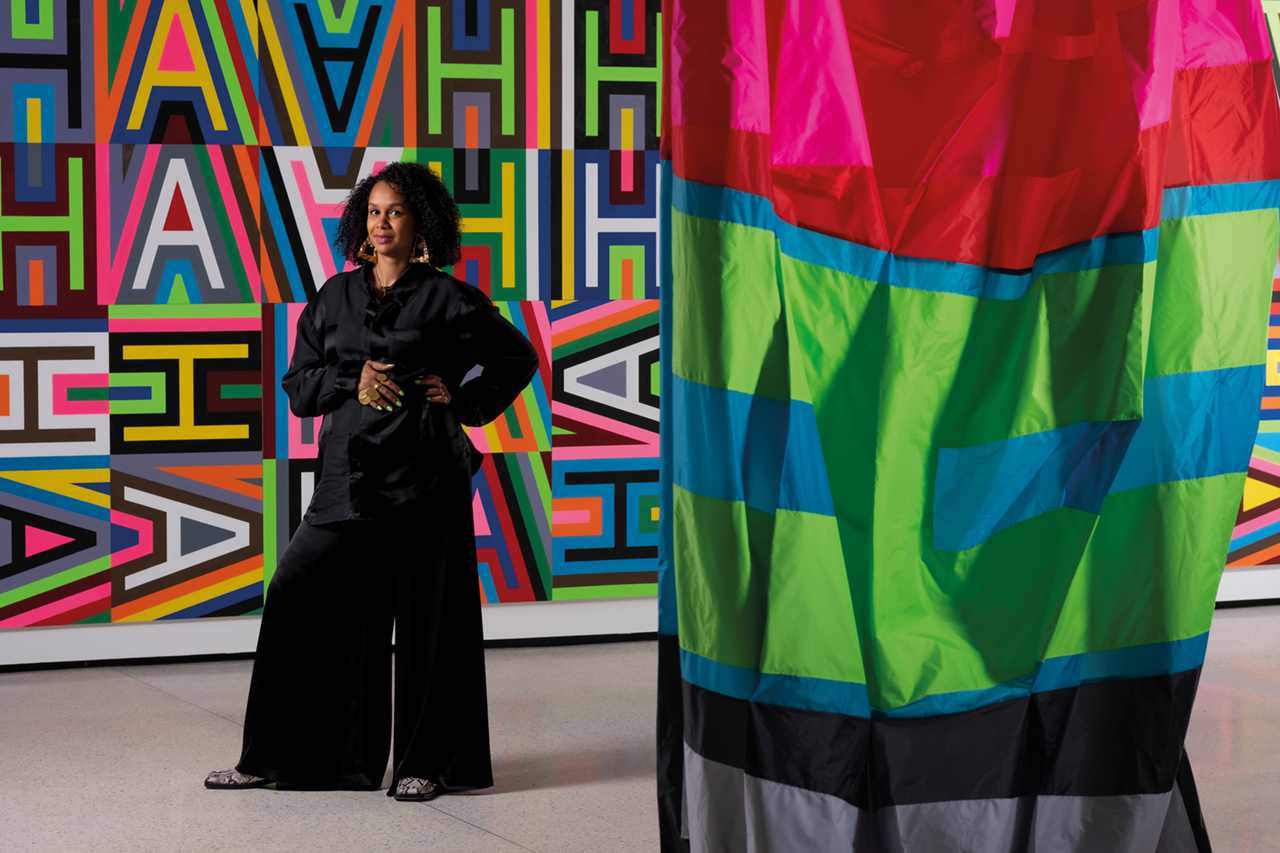Fencing lessons
Taking inspiration from the concealed ditches in the grounds of the Yorkshire Sculpture Park, British Ugandan artist Lakwena Maciver has created a show questioning our freedom of expression
What are ha-has, how do they reflect today’s society and how did they inspire this exhibition?
The ha-ha is a sunken fence dug into the ground used in 18th century English landscape gardening to create a discreet boundary that would keep animals away from their gardens but create the illusion of openness, preserving an uninterrupted view of the landscape.
The presence of the ha-has at Yorkshire Sculpture Park inspired this exhibition, and the series of works in this show uses the idea of the ha-ha to ask whether public speech in our society could be understood to be colonised.
The exhibition comments on how public space and public speech are increasingly tightly controlled by a privileged elite. Is the art world also a victim of this?
Very much so. The exhibition is asking the question specifically to the culture makers, the educators and gatekeepers of our institutions, as I see these roles as having significant influence over public space and public speech in our society, more so than traditional authority figures, who we are educated and actively encouraged to be very critical of in our society.
Does the exhibition comment on colonialism and black people’s access to nature?
It does comment on what I see as behaviour which follows in a colonial tradition, but it is not about black people’s access to nature. I think that is an important subject, but one that many people are highlighting at the moment. I’m using the landscape as a metaphor for public speech, and I’m commenting on the many different types of people right now, not of any particular race, whose access to freely express themselves is being curtailed. What I’m trying to get at is something that I would consider more insidious.
Many of the exhibition pieces look like protest banners – what do the slogans you employed mean to you and what does it mean to have this work viewed in a gallery as opposed to on the streets?
Usually the words that I use in my work are very sincere, and also more open to interpretation. The words painted in this show are much more didactic and the tone is quite bossy and patronising. I am actually asking people to question the words that I’ve painted, rather than to blindly swallow them.
I appreciate being able to show work both in galleries and on the streets. There’s an accessibility to work on the streets which means that everyone gets to see it. It’s only a small minority of the population who tend to visit galleries, so it’s a much smaller audience, but what I do appreciate about the gallery space is that you have more control over it to construct a narrative, and there is a level of credibility and respect that is given to the work from it being positioned in an institution. And I’m grateful for that.
What do the face mask sculptures represent?
I was really interested in documenting the face mask phenomenon that arose during Covid. What I saw happening, and I don’t think I’m the only one, was that they became banners worn on the face, political statements, a form of virtue signalling. I found this fascinating, and it tied in well with the wider theme of the work in the show, as well as being a very potent metaphor for the muzzling of speech. The face masks were also often found littering the streets, and I liked the idea that in this way they became a form of violence against the land, which also tied into some of the ideas I was exploring.
A longing for paradise is often represented in your work. What does paradise look like to you?
The word decolonisation has I think been a bit abused, but I actually see paradise as ultimate decolonisation. I enjoy using the word in this way. When I use the word decolonisation I am thinking about the many ways that many different people are controlled, oppressed and subjugated by others. So paradise to me is freedom from all of those things.
What would you like visitors to take away from the exhibition?
I would like them to question what they are being told to believe. We are in a society where it is not radical to mock the prime minister and it is not revolutionary to critique the monarchy. But there are questions that we are not allowed to ask, and conversations that we are not allowed to have. And I particularly want young people who visit the exhibition to ask those questions and to have those conversations, because I don’t think anyone else is telling them to.
Photos: Jonty Wilde

Leave a reply
Your email address will not be published.